Baby's skin
Skincare
- Baby's skin is delicate and prone to becoming dry and irritated. It needs gentle care.
- Use plain water or fragrance-free bathing gel for a baby bath.
- When the weather is dry, you may apply moisturiser on your baby after bath to prevent his skin from drying out.
- Avoid exposing your baby to strong sunlight when you go out. Use an umbrella or put a bonnet on your baby to protect him from the sun. Ask a doctor before applying sunscreen to infants under 6 months of age.

Common skin problems among babies
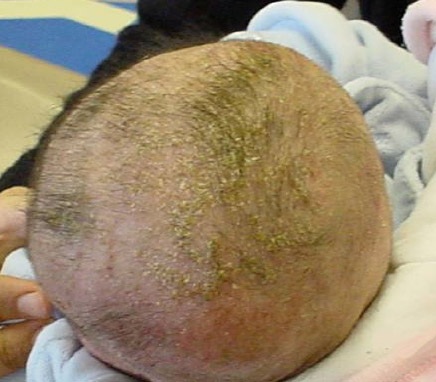
Seborrhoeic Dermatitis
(Commonly known as ‘cradle cap')
Descriptions
Causes
- Not completely clear
Symptoms
- Common among newborns.
- Appears slightly red
- Small oily flakes or yellowish thick scales adhering to the scalp or eyebrows, forming a layer of scab
- Commonly found when baby is 3 weeks to 3 months old.
- Subside gradually at around 6 months old.
Affected areas
- Areas with lots of skin glands
- e.g. head, forehead, cheeks, eyebrows, ears, armpits, belly and the folds between the thighs
Treatment and prevention
- Keep baby's skin clean.
- Rinse the affect areas with water. Do not use soap / bath gel.
- Apply moisturizing cream after cleaning to keep the skin moist
- For thick scales on scalp, apply olive oil and leave on the scalp for 20 minutes to soften them. Wipe the scales off gently with cotton swabs.
- Rinse with baby shampoo. Use a comb to clear away the adhered patches
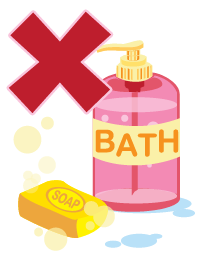
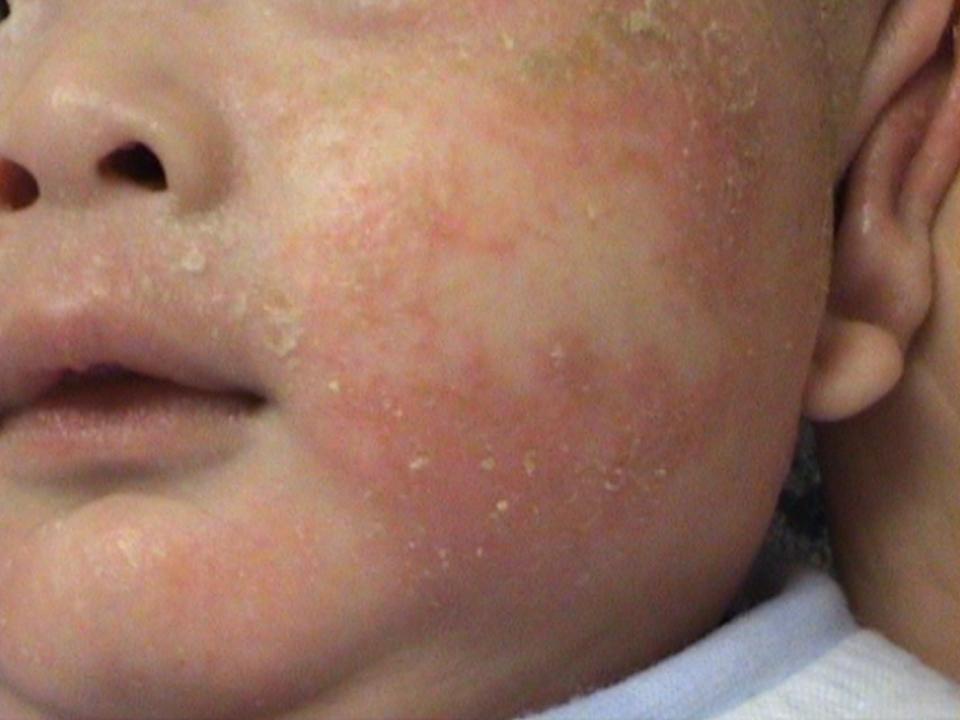
Infantile Eczema/Atopic
Descriptions
Causes
- Unknown
- Not infectious
- More likely to appear in babies with family members suffering from allergies (e.g. asthma, allergic rhinitis) or being allergic to certain substances (e.g. pollen, detergents, dust or foods).
Symptoms
- Commonly found in babies 2-3 months old.
- Appears red and dry. Sometimes, small blisters appear and scabs are formed when blisters broken.
- Baby will scratch the affected areas due to itchiness
- Skin becomes thick and hard after scratching
- In most cases, it appears before the age of 5 and fades away after 15. Some may persist into adulthood
Affected areas
- Cheeks, elbows, knees, trunk and folds between thighs.
- The affected areas will vary with age.
- Commonly found on neck and folds on limbs when reach the age of 2.
Treatment and prevention
- Keep skin clean and moist
- Bathe baby with lukewarm water and non-alkaline bathing gel
- Pay attention to cleaning the skin folds
- Apply fragrance-free moisturizer after bath
- Trim baby's nails regularly to reduce the chance of skin injury by scratching. May put cotton gloves on baby if the baby scratches a lot
-
Pay attention to the temperature and humidity of the environment. Avoid exposing directly to strong sunlight or cold wind.
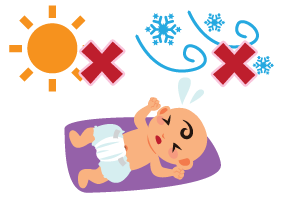
-
Clean your home with wet cloth or vacuum cleaner to remove dust
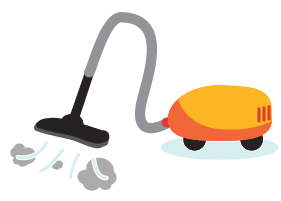
- Do not keep furry pets
-
Choose cotton clothes for your baby. Avoid clothes made of wool, nylon or silk to be in direct contact with baby's skin

- Use mild detergent to wash baby's clothes. Rinse with water thoroughly.
- Breastfeeding may prevent eczema.
- If symptoms persist or get worse, consult your doctor before applying any medications
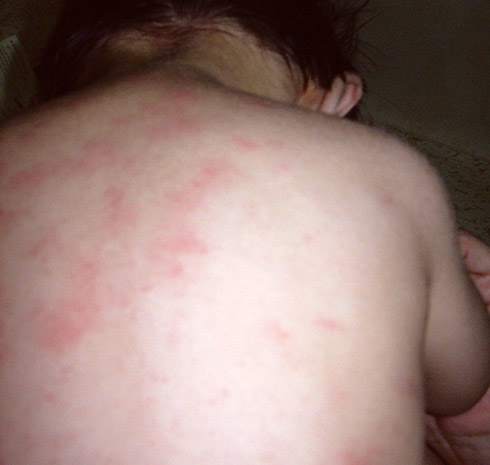
Heat Rash/Prickly Heat
Descriptions
Causes
- Usually in hot weather
- Occurs when wrapped in excessive clothing
- Caused by sweat staying on skin
Symptoms
- Small raised red spots
Affected areas
- Neck, back and chest
Treatment and prevention
- Clean with a towel and water
- Dress in appropriate amount of clothing
- Keep skin dry and cool; reduce sweating
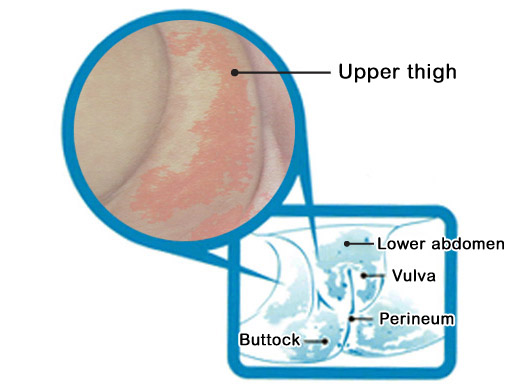
Diaper Rash/Nappy Rash
Descriptions
Causes
- When skin is irritated by urine and faeces.
Symptoms
- Begins as red spot, then develops into small raised reddish rash
- Sometimes spread to all areas covered by diaper
Affected areas
- Vulva, perineum, buttocks and areas wrapped by diapers.
- Sometimes may appear on lower abdomen and upper part of the thighs.
Treatment and prevention
- Keep baby's bottom clean and dry
- Clean with damp cotton wool when changing diapers.
- Allow the bottom to air dry. Apply a thin layer of oil-based moisturizer (Vaseline) or zinc oxide cream to keep the urine and faeces from direct contact with the skin
- Do not use talcum powder. It will mix with urine or sweat to clog the sweat pores and worsen the condition
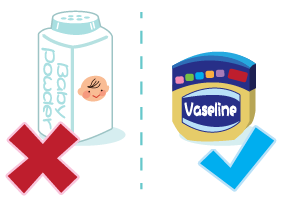
*If the above symptoms persist, please consult your doctor.
Baby's sleep
The advantages of having regular routines
As babies become more used to their surroundings, parents should start establishing regular daily routines for them. Having regular feeding, bathing and sleeping hours can make the environment predictable and instill a sense of security in your baby. By providing your baby with a stable environment, she will less likely develop behavioural and emotional problems. It will also be easier for you to understand her temperament and behavioural pattern.
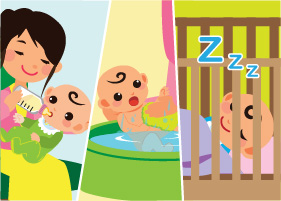
Characteristics of babies' sleep
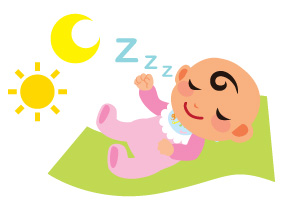
While the “job” of babies is eating and sleeping, you need to learn more about the characteristics of your baby's sleep and establish a regular sleeping routine for her.
Just as inside the mother's womb, babies sleep whenever they are tired without taking note of day or night in their first couple of months. They have short sleep periods of 3 to 5 hours in length. They also wake up easily from time to time as about half of their sleep time is in the light sleep state.
When they are 3 months old, they can sleep for longer hours. Two-third of their sleep takes place at night time. When they reach 6 months old, around 50% of the babies can sleep at night for 6 hours.
Sleeping hours
The sleeping hours will change as our child grows:
| Age | Total sleeping hours in 24-hour period* (include both day and night sleep) |
|---|---|
| 4-11 months old | ~ 12-16 hours |
*Reference: WHO guidelines on physical activity, sedentary behaviour and sleep for children under 5 years of age. Geneva: World Health Organization; 2019. Licence: CC BY-NC-SA 3.0 IGO.
The ideal and safe sleep environment
Room temperature and ventilation
- Room temperature should be comfortable with good ventilation.
- Do not put on too much clothing or blankets for your baby as she may not be able to sleep when feeling too warm.
- Check the baby's nape of her neck. Feeling just warm means that your baby is comfortable. If there is sweat, it may mean that it is too warm for your baby.
Sounds
Babies can fall asleep even if the surroundings are not completely quiet. Playing soft music or humming a lullaby to your baby may help her fall asleep.
Beddings
- Cotton bed sheets and blankets are the best for babies by reducing the chance of allergies
- Tucking the sides of the blanket underneath the mattress can avoid the blanket being shifted over to cover your baby's head and prevent suffocation.
- You may swaddle your baby in a blanket to make him feel secure. However, swaddling too tightly can affect breathing and will trap body heat. Also make sure your baby's head and face are not covered. Similarly, if swaddling too loosely which may increase the risk of having the baby's airway being obstructed and his body being strangulated. Let your baby sleep in supine position when swaddled. If the baby attempts to roll, do not use swaddling to prevent any accidents.
Learning how to sleep
Differentiating day and night
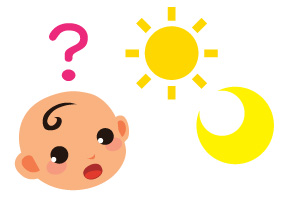
Babies cannot tell day from night. How to teach babies to stay active during daytime and go to sleep at night seems to be a big challenge for parents. To help your baby establish her daily routine, you may start by emphasizing the difference between day and night through lighting and introducing a regular schedule.
Light
- There should be difference in the lighting at different times of the day – keep the room well-lit in the daytime and dim or turn off the lights when it is time to sleep at night or around bedtime.
- Some babies may wake up crying for feeling scared of the darkness. You may keep a night-light on to reassure your baby.

Regular daily routines

- When your baby is awake in the daytime, you may play and talk actively with her to prevent her from sleeping too much during the day. When your baby gets tired as shown by having drooping eyelids, rubbing her face against you or yawning, let your baby sleep.
- Try to arrange your household chores and other activities and minimise evening activities for your baby, such that you could settle her down after feeding her. You can hum a tune or talk to your baby to calm her down. Then put your baby in bed and let her fall asleep on her own.
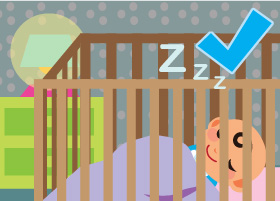

Establishing bedtime routine
Developing regular sleep routine – English
Heading: Developing regular sleep routine
Scene: Daddy plays with baby.
Mother: Baby, It's time to sleep.
Daddy: Oh, she is tired now. Let her sleep in my arms.
Mother: It's not a good idea. Baby will only sleep when you hold her. Actually, I have already helped her develop a regular sleep routine.
Daddy: Regular sleep routine?
Narrator: When your baby reaches 2 to 3 months old, you can help her develop a regular sleep routine. This is about associating your baby's particular daily activities with going to sleep. In this way, babies learn to fall asleep on their own after the series of activities. Babies have different characteristics. You can help your baby develop sleep routines according to her characteristics and habits. Here are two examples.
Sub-heading: Feed your baby. Burp her and hum a tune to her. When your baby gets sleepy, put her in bed. Turn off the light.
Narrator: Here is another example.
Sub-heading: Bathe your baby. Feed your baby. Burp her. Have a little chat with your baby. Put your baby in bed when she gets sleepy. Play soft music and dim the light. Let her fall asleep on her own. Developing regular sleep routine for your baby makes baby care easier for you.
- When your baby has reached 2 to 3 months old, you can try to set up a regular bedtime routine for her and let her fall asleep on her own at the end of these activities, so that she can learn to associate these activities with going to sleep.
- When babies are used to falling asleep in their bed, it is easier for them to fall back to sleep even if they wake up in the middle of the night.
- You can set up an individualized bedtime routine for your baby according to her temperament and daily routines.
Poor Sleeping Habits
Never let your baby develop poor sleeping habits. For instance, some babies can only fall asleep when they are in their parents' arms or bed, being rocked or fed. Once these undesirable sleep patterns have developed into your baby's routines, she would depend completely on your attention and company to fall asleep every night; she would also hardly fall back to sleep without your warm embrace or comfort derived from nursing / sucking.
What happen if your baby falls asleep during feeding?
- It is common for babies to fall asleep during feeding, especially those under 1 month old who need to be fed frequently.
- If your baby falls asleep during feeding, you can stop feeding her. Put her on bed after burping your baby without waking her up. You can feed her a bit earlier next time so that your baby won't be too tired at feeding time.
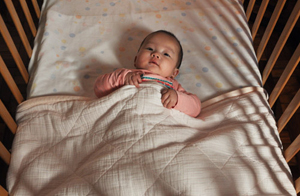
- As your baby needs less frequent night feeding when she grows, it would be a good time for you to establish a sleep routine for your baby to help her sleep on her own.
- If your baby wakes up and cries at night, you need to find out what she needs, such as changing a wet nappy, company or feeding. You should not feed your baby if she is not hungry to avoid your baby depending on comfort nursing to fall back to sleep.
Note: Establishing a successful sleep routine for your baby involves steps of having the baby fed, nappy changed and putting her in bed when she starts to show signs of tiredness. There is no quick fix to baby's sleeping problems. Therefore, in developing a sleep routine for your baby, you need to be patient and persistent and pay attention to factors that may affect your baby's sleep.
Baby's safe sleeping position and environment
Baby's safe sleeping position and environment
Title: Baby's safe sleeping position and environment
Narrator: Let babies sleep on their backs
Sleep in their own cot
Dress them in light and comfortable wear
They do not need pillows
Leave their arms uncovered
Don't place any soft and fluffy objects in the cot
Leave no gaps between the mattress and the cot
Distance between the vertical bars of the cot should be less than 6 cm
Place the baby cot next to the parents' bed
If you need to share a bed with your baby for some reason, give him a separate blanket; for a baby aged less than 3 months old, you may place him in a basket
Don't take alcohol or drugs if you are to sleep with babies.
Keep good ventilation and a comfortable temperature. There should not be any smokers in the family
Don't leave babies alone on a bed or sofa without guards
Lastly, breastfeeding can protect against SIDS (sudden infant death syndrome in subtitle), after feeding and burping the babies, put them in the cot when they look sleepy. That helps them build a good sleeping habit.
Please visit www.fhs.gov.hk
Preventing Sudden Infant Death Syndrome (SIDS)
Sudden Infant Death Syndrome (SIDS) or cot death is the sudden, unexpected and unexplained death of a baby with unknown cause. SIDS is a major cause for sleep-related death in babies which most commonly affects babies in the first 6 months, with its risk peaking at 1 to 4 months of age. Sleeping on the back gives your baby the best protection from SIDS. In addition, a smoke-free environment, vaccinations and breastfeeding can also reduce the risk of SIDS in your baby.
Other causes of sleep-related accidents in infancy include suffocation, fall from bed, etc.

How to create a safe sleep environment?
Ensuring the safety of your baby's sleep environment is of paramount importance. An unsafe sleep environment can be fatal to your baby.
Here is a checklist of a safe sleep environment for babies. How many of these measures are you taking at home?
- Sleep with your baby in the same room in separate beds

- The distance between the bars of the crib should be less than 6cm (2.5 inches)
- Remember to pull up and lock the rail of the crib when you leave your baby alone in the crib
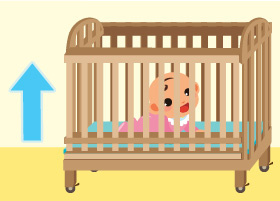
- The size of the mattress should be fitted in the crib to prevent baby from rolling into the gap
- Make sure your baby's face and head cannot get covered by the blanket to prevent smothering and overheating
- Let your baby wear light and comfortable clothing at bedtime
- Keep the room well-ventilated with comfortable temperature for your baby
The following 4 situations may threaten your baby's sleep safety. ‘Watch out' and ‘Don't do' these:
- Mattress that are too soft and thick – baby may easily roll over to a face-down position which may lead to suffocation.
- Use baby pillow or let baby sleep on big, soft and fluffy beddings or objects. These include light, soft blankets or duvets, sheep skin, bean bag chair, bumper, pillows or stuffed toys. Your baby could be smothered easily when covered by these soft objects.
- Place things other than beddings (e.g. toys and clothing) in the baby crib.
- Put on too much clothing or cover your baby with too many blankets – the baby may feel overheated.
Feeding
After 6 months old, babies have a higher demand for iron; breastmilk alone cannot satisfy their nutritional needs. Apart from breastmilk or infant formula, babies need a variety of foods to provide various nutrients to support their growth and development. This is the time to introduce solid food into your baby's diet to provide adequate nutrients for him, as well as to help him learn chewing and swallowing food of different textures.

